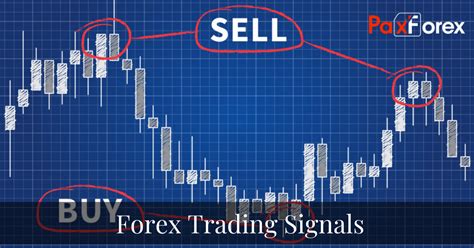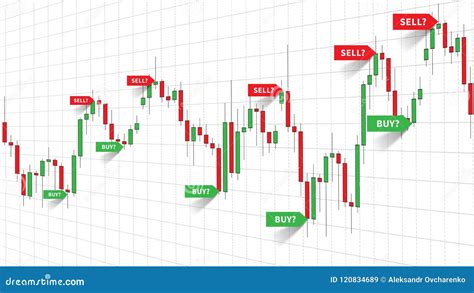Forex trading has become an increasingly popular way for individuals to engage with the global financial markets. At the heart of successful trading lies the use of Forex trading signals, which provide essential insights and recommendations to guide traders in making informed decisions. These signals, whether generated manually or through automated systems, offer real-time market data, trends, and predictions that can significantly enhance a trader’s ability to navigate the complex world of currency markets. By understanding how to interpret and apply these signals, traders can improve their strategies and increase the likelihood of successful trades. In this guide, we'll explore the different types of Forex trading signals, how to effectively use them, and the tools and techniques that can support your trading decisions.

Understanding Forex Trading Signals
In Forex trading, Forex Trading Signals are crucial for guiding traders to make informed decisions. These signals are based on various factors such as currency pair movements, technical indicators, and market events, and help traders maximize profits while minimizing risks.
What are Forex Trading Signals?
Forex trading signals are market alerts that provide insights on when to buy or sell a currency pair. These signals are derived from technical analysis, often combined with economic indicators, and are designed to help traders make precise decisions in the fast-moving Forex market.
Origin: Signals typically come from either automated systems or manual analyses by experienced traders.
Purpose: They help in identifying optimal entry and exit points for trades, aiming to capitalize on market movements.
Sources:
Automated signals: Generated by software tools or algorithms that analyze the market data in real-time.
Manual signals: Provided by expert traders who analyze charts, patterns, and news to predict market behavior.
These signals can be for any major currency pair like EURUSD, GBPUSD, or USDJPY and are often accompanied by suggested stop loss and take profit levels for effective risk management.
Types of Forex Trading Signals: Automated vs. Manual Signals
Forex signals can be broadly classified into two categories: automated and manual. Each has its unique features and benefits.
Automated Forex Signals:
Generated by algorithms or AI-based trading systems.
Provide real-time alerts based on pre-defined parameters.
Often used by traders who prefer hands-off trading.
Manual Forex Signals:
Created by human traders analyzing charts, indicators, and economic events.
Offers more personalized insights and nuanced analysis.
Relies on the expertise and experience of the signal provider.
Key Differences:
Speed: Automated signals react instantly to market changes; manual signals take more time to analyze.
Accuracy: Automated systems are programmed to follow strict parameters, but manual signals can adjust based on market sentiment and nuances.
How Forex Trading Signals Help Traders Make Informed Decisions
Forex trading signals are essential tools for traders to optimize their decision-making process. Here’s how they contribute to more informed trading:
Signal Validation: Helps traders validate their market predictions with technical data, such as RSI or MACD.
Risk Management: Signals often come with recommended stop loss and take profit levels, aiding in controlled risk exposure.
Market Timing: Identifies the perfect entry or exit points, improving timing and reducing the risk of missing profitable moves.
Simplifies Strategy: Provides clarity in decision-making, especially when combined with solid trading strategies like scalping or trend following.

How to Interpret Forex Signals
Interpreting Forex signals involves understanding not just the information they provide but also how it fits into a broader trading strategy. When receiving a Forex signal, traders must first look at the currency pair involved and the suggested trade direction. For example, a signal suggesting to buy EURUSD means that the system or signal provider expects the Euro to rise against the US Dollar.
Next, traders must verify the signal's validity by cross-checking it with their preferred trading indicators, such as Bollinger Bands or Fibonacci retracements, to ensure that it aligns with the overall market sentiment. Once validated, a trader can enter the trade while setting appropriate risk/reward ratios.
Understanding Candlestick Patterns: Often, signals include or are based on key chart patterns like Head and Shoulders or Double Bottom. Recognizing these patterns adds an extra layer of confidence to the signal.
Using Timeframes: Traders should match signals with the appropriate timeframes (e.g., H1, D1) to gauge the market's current trend and volatility.
Best Practices for Using Forex Signals
To make the most out of Forex trading signals, here are some best practices:
Step 1: Choose a Reliable Source
Look for proven signal providers with a history of accuracy.
Consider using automated signal systems that are based on robust algorithms or trusted manual providers.
Step 2: Combine Signals with Personal Analysis
Use RSI, MACD, or other indicators to confirm signals.
Don’t rely solely on the signals; always incorporate your own technical analysis.
Step 3: Apply Risk Management Strategies
Ensure that every trade includes a stop loss and take profit to safeguard against unexpected market fluctuations.
Step 4: Track and Adjust
Continuously evaluate the performance of the signals you’re using.
Adjust your trading strategy based on the changing market conditions.
Forex Trading Signal Example for EURUSD
| Currency Pair | Action | Entry Point | Stop Loss | Take Profit | Signal Type | Indicators Used |
|---|---|---|---|---|---|---|
| EURUSD | Buy | 1.1200 | 1.1150 | 1.1300 | Automated | RSI, MACD |
| GBPUSD | Sell | 1.3100 | 1.3200 | 1.3000 | Manual | Fibonacci, MACD |
| USDJPY | Buy | 112.50 | 112.00 | 113.00 | Automated | Bollinger Bands |
Forex trading signals are indicators that suggest when to buy or sell a particular currency pair in the Forex market. They are typically based on technical analysis, fundamental analysis, or a combination of both.
They help traders identify entry and exit points for trades.
Signals can come from automated tools or manual analysis by experts.
Traders use these signals to make informed decisions, reducing the risk of emotional trading.
To use Forex trading signals effectively, you must integrate them into a well-defined trading plan. Consider factors like risk management, trading timeframes, and market conditions.
Follow the signals provided by trusted sources.
Combine with technical indicators like MACD or RSI for more confirmation.
Always use a Stop Loss to limit potential losses.
The most popular Forex currency pairs include:These pairs offer higher liquidity and are ideal for both beginners and experienced traders.
EUR/USD (Euro/US Dollar)
GBP/USD (British Pound/US Dollar)
USD/JPY (US Dollar/Japanese Yen)
AUD/USD (Australian Dollar/US Dollar)
The Relative Strength Index (RSI) measures the speed and change of price movements on a scale from 0 to 100.
An RSI above 70 signals that the asset might be overbought.
An RSI below 30 suggests that it might be oversold.
Traders use this indicator to identify potential reversal points.
A Stop Loss is a risk management tool used to prevent further loss in a trade by automatically closing the position once it reaches a predetermined loss level.
It helps protect capital.
It's an essential tool for limiting emotional decisions during volatile market conditions.
Economic events like Non-Farm Payroll reports, Interest Rate Decisions, and GDP Growth can significantly impact currency values. Traders often watch these events closely as they can trigger large price movements in the Forex market.
Interest rate decisions by central banks can lead to currency appreciation or depreciation.
Non-Farm Payroll data impacts the strength of the US Dollar.
The best strategy is to combine Forex trading signals with complementary indicators like Bollinger Bands, MACD, or Fibonacci Retracement to confirm entry and exit points.
Use signals in conjunction with chart patterns like Head and Shoulders or Double Top to improve accuracy.
Ensure you apply the strategy across different timeframes for a more robust approach.
Effective risk management while using Forex signals involves setting clear Stop Loss and Take Profit levels, calculating risk/reward ratios, and adjusting position sizes based on account size.
Keep your risk/reward ratio at a favorable level (e.g., 1:2 or higher).
Use position sizing techniques to control your exposure to any single trade.
Be aware of your Maximum Drawdown and Risk Tolerance when implementing these strategies.








